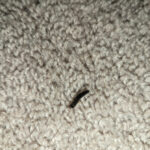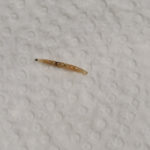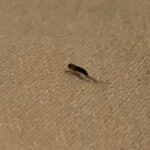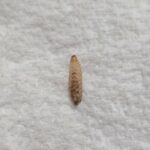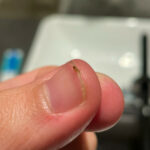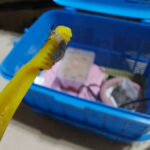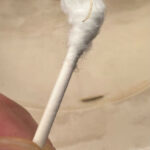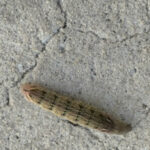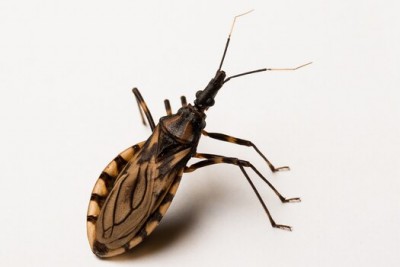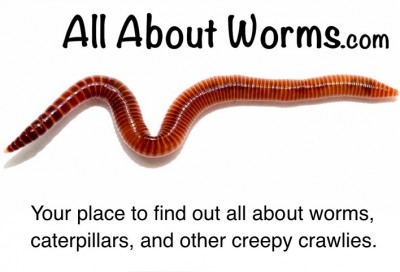
“What are these orange worms and how do you get rid of them?” asks this reader in her submission regarding the critter pictured below. “Live in a thatched apartment. Found on the bed.” Based on the fantastic picture, we think our reader found a scarlet malachite beetle larva. The scarlet malachite beetle belongs to a family of beetles called soft-winged flower beetles (Melyridae). Many of the larvae that belong to this family look similar: three sets of prolegs, a bulbous, darkly-colored head, and a segmented body. It is native to Great Britain, but was also introduced to North America in the 1800s. Unfortunately, the scarlet malachite beetle is quite rare in Britain today, as it is considered a protected species.
Now, it makes perfect sense that our reader should find this larva in her home, because scarlet malachite beetle larvae specifically prefer thatch, and tend to live on big patches of thatch that are unshaded and open to the sun. According to BugLife’s “fact sheet on scarlet malachite beetles“, the reason for this is because thatch provides a “stable environment” for the larvae to grow up in, where the thatch attracts other insects, whose young the scarlet malachite beetle larvae feed on. The adult beetles, on the other hand, do not live on thatch or feed on the larvae of other insects. Instead, they leave the thatch behind, moving on to meadows where they feed on the pollen of flowers, and find a mate, reproduce, and lay eggs on a thatch roof to begin the process all over again!
With that said, these beetles will lay eggs on thatch that is not close to a meadow, so we assume that our reader is living close to a meadow. In any case, we recommend moving the larva outside, and if possible, putting them on the thatch. We definitely do not recommend squashing this larva, as this species is a protected species. On top of that, they just aren’t harmful at all to humans or pets, and will actually help keep down infestations of other insects inside the home, especially if they are able to get through the roof (perhaps through a hole).
To conclude, the orange worm our reader found on her bed is a scarlet malachite beetle larva. It likely ended up here by accident, so we recommend just moving it outside, preferably returning it to the thatch. They are not harmful whatsoever, and should be protected. We hope this helps, and we wish our reader the very best!
All About Worms is always free, always reader-supported. Your tips via CashApp, Venmo, or Paypal are appreciated! Receipts will come from ISIPP Publishing.
You might also find these guys interesting!




